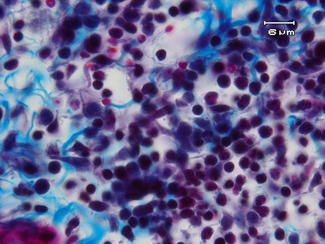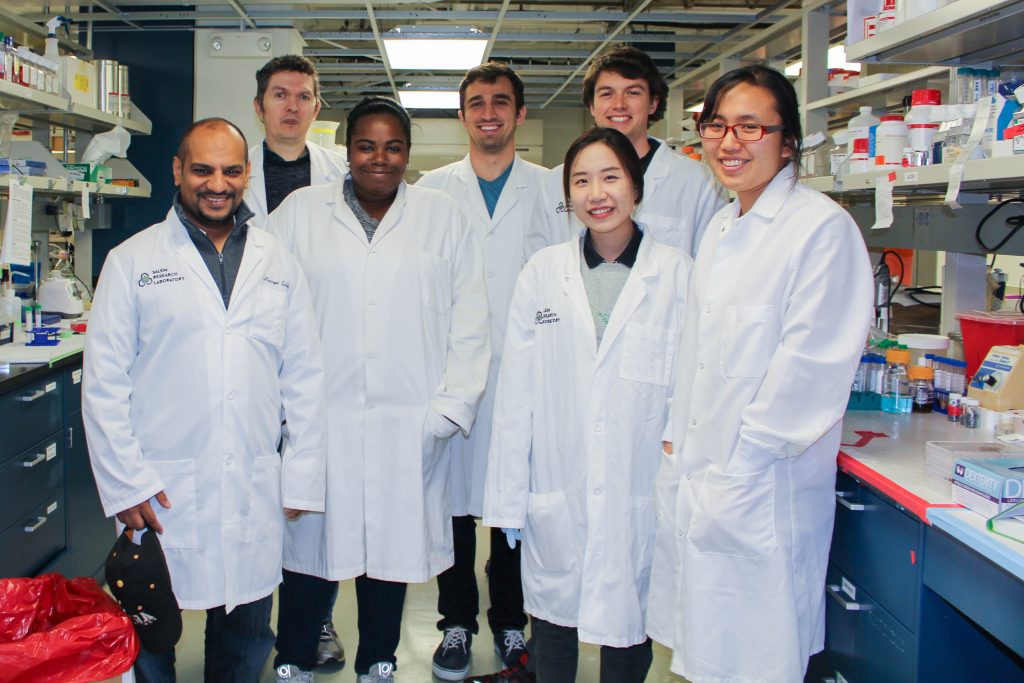Co-Leader: Paul B. McCray, Jr., MD
Co-Leader: Josalyn Cho, MD

The Inflammation and Innate Immunity Theme is focused on early responses and potential acute and chronic immune and inflammatory consequences of environmental exposure to: i) microorganisms and their immuno-active products; and ii) other natural and man-made products that can impinge on human immune and inflammatory systems.
Current research activities include:
- improvement and extension of measurements of microbial and allergen exposure in various home and workplace settings and the association of these exposures with the development of asthma and wheeze, chronic bronchitis, emphysema, and chronic obstructive pulmonary disease (COPD);
- assessment of potential impacts of exposures to ambient coarse particles (e.g., coal ash) on development of cardiovascular and pulmonary disorders and function of airway host defenses;
- assessment of impact of micro-particulate matter derived from air pollution in an urban setting on transmission and susceptibility to lung infection;
- studies of novel cellular and molecular mechanisms regulating host inflammatory responses to bacterial endotoxins, development of asthma and chronic lung changes, and reversal and repair of airway functional and structural changes.
Co-Leader: Peter S. Thorne, PhD
Co-Leader: Aliasger Salem, PhD
The Nanoscience Theme identifies the physico-chemical characteristics of nanoscale materials used in agriculture, pharmaceutics, consumer products, rural manufacturing (e.g., wind turbines, biofuels) and the food industry and characterizes exposures and adverse outcome pathways. Nanotechnology is rapidly stepping into agriculture and food sciences. Nanomaterials are already being used in food packaging and sprays for preservation and in environmental applications for identification and removal of toxic pollutants. “Smart sensors” based on nanomaterials are being developed for detection of toxicants and pathogens. For example, Ag, Fe, ZnO, and Fe3O4 nanoparticles, can be used to detect heavy metal ions and volatile organic compounds in water and soil. Nanocapules made of liposomes or polymers can be used to target parasitic weeds by releasing significantly lower doses of herbicides in a controlled manner. Nano-sized carriers of agrochemicals are being designed to travel through the plant and release their load after a target condition has been met. Potential toxicity of nanomaterials needs to be determined before their extensive use in agricultural processes and products. Furthermore, clear exposure and risk assessments are needed in agriculture and food industries.

Co-Leader: Jonathan A. Doorn, PhD
Co- Leader: Aileen Keating, MS, PhD
Research in systemic and redox toxicology is central to the EHSRC because many rural environmental agents cause disease or pathological conditions by producing oxidative stress in cells. Oxidative stress is a condition where the rate of generation of oxidants exceeds the capacity of antioxidant enzymes to eliminate them. A large number of human diseases have oxidative stress as part of their mechanism. Agents leading directly to the increased production of free radicals and oxidants, as well as compromising antioxidant systems, include pesticides and a variety of chemicals and background radiation found in the rural environment. Moreover, metabolism of rural environmental agents by a range of metabolizing enzymes influences individual susceptibility to environmental exposures. Therefore, OSM is a critical element in environmental health research, embodying basic mechanistic approaches to the understanding and quantitation of health risks associated with environmental exposures. Importantly, understanding the interconnection between oxidative stress and metabolism will guide efforts aimed at developing intervention strategies, such as dietary interventions or clinical use of antioxidants, to reduce the burden of disease in at-risk populations.
This thematic area brings together center researchers in the systemic and redox toxicology and xenobiotic metabolism fields as they relate to environmental lung disease and agricultural chemical-associated diseases, such as carcinogenesis, neurodevelopmental and neurodegenerative disorders.

Co-Leader: Hans-Joachim Lehmler, PhD
Co-Leader: David Cwiertny, PhD
Because of their proximity to agriculture and agribusinesses, rural people have significant exposures to bioaerosols, organic dust, and allergens; agricultural pesticides and farm chemicals; and antibiotic resistant pathogens from the livestock industry. Hazardous waste sites in rural areas often go ignored, leading to significant air- and waterborne exposures. Seventy percent of rural residents get their drinking water from private, unregulated water supplies whereas virtually all urban dwellers drink public water that is regulated and monitored.
The EHSRC is well positioned in America’s heartland to investigate a variety of exposures and diseases related to agricultural activity and rural life, including remediation of rural hazardous waste sites and impaired water quality arising from excessive inputs of manure producing risks of methemoglobinemia and harmful algal blooms.

 Co-Leader: Currently Vacant
Co-Leader: Currently Vacant
The Population Health Theme encompasses population-based studies to investigate the prevalence and determinants of disease; the exposures (external and internal) that contribute to the outcome measure; and the efficacy of environmental, public health and medical surveillance and interventions to reduce exposures and the burden and severity of disease.